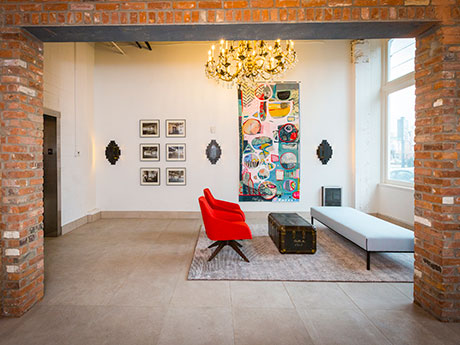By Todd Pease, Michelle Klingenberg and Britney Aviles, JLL
Since the Cincinnati office landscape upended during the pandemic, area businesses, building owners and broader leaders sought opportunities to help entice employees to return to the office, reclaim the area’s vibrancy and spur economic growth. These stakeholders realized that to entice employees back into the office, they would need to make it worth the commute.
Throughout this evolution, one thing continues to drive tenants into office buildings: high-quality amenities. Amenity demands have changed over the last few years and there are new ways for building owners to create spaces that engage employees.

Amenities of the past
Up until 2020, the standard “five days in the office” model meant that office buildings strived to accommodate as many professionals as possible while maintaining efficiency. The space planner was the lead consultant on planning offices, and they would work with tenants to design spaces in a way that most efficiently accounted for their company headcount.
Regarding office amenities, tenants most valued high parking ratios, conference facilities, gyms and locker rooms, and onsite food options. It was all about productivity and it didn’t matter if productivity took place in a gray cubical under florescent lighting.

Today’s office tenant
Fast forward to 2024: the world, economy and workforce have changed dramatically, and with it, so have office demands. Of course, events like the COVID-19 pandemic reframed the way people go to the office, but it also expedited the evolving workplace demands from the next generation of employees.
Baby boomers are nearing or entering retirement and buildings are now owned and occupied by younger professionals. Millennial and Gen Z employees have different office demands than their older colleagues; the pandemic served as a catalyst for new workplace strategies to come to the forefront.

Today, tenants look for several different elements when occupying office buildings, most commonly revolving around three components: creating space for collaboration, being in a desirable location and integrating the company’s identity.
Teamwork, innovation
As Cincinnati employees continue to embrace hybrid and work-from-home arrangements, building owners have changed their focus from efficiency to collaboration. Companies are willing to pay more per square foot to encourage their employees to come back and work together. JLL Cincinnati research found that the Class A direct asking rent in the first quarter of 2024 was $23.92 per square foot.
Companies have shown increased demand for “second places” in office buildings, where employees have options to gather beyond their company’s office suite. This may look like coffee shops, soft seating in lobbies, outdoor meeting spaces and more.
Buildings like Factory 52 in Norwood leverage their ample outdoor space to meet the demand for increased meeting places. In addition to second places, what used to be standard conference rooms are now taking the form of tenant lounges, which are now often left unlocked and are free for professionals to come and go as they please.
Location, location, location
An office’s location is a driving force in drawing new tenants. Building owners must recognize the unique benefits of the neighborhood and use them to their advantage. For example, offices at Newport on the Levee boast their location in one of Cincinnati’s entertainment hubs, giving tenants access to unique retailers and restaurants, national experience-driven brands, an AMC Theater, aquarium and more.
Building owners are not only leveraging the benefits unique to their location but reducing barriers for people to come to the office. They are less concerned about high parking ratios and now are offering free, onsite parking for tenants, creating more opportunities for individuals to enjoy their environment.
Making the space personal
Companies continue to prioritize integrating their personality and culture through office design. While tenants may continue to work with space planners, they now prioritize partnerships with interior designers to help the office come to life. This allows the tenant to make their office feel personal, spark creativity and infuse the company identity.
The Strietmann Center in Cincinnati’s Over-the-Rhine neighborhood is a prime example of bringing tenant design to the forefront. In doing so, the building is now fully occupied with creatives, entrepreneurs, millennials and their clients.
As commercial real estate professionals, it is our job to ensure that building owners are up to date on the modern office tenant’s demands. Furthermore, we are committed to ensuring tenants are well-suited with offices that fit their needs, create space for collaboration and help companies integrate their company persona. One thing remains clear — companies still value bringing employees together and they want to do it in highly amenitized buildings that foster a culture of creativity and collaboration.
Todd Pease and Michelle Klingenberg are senior vice presidents, while Britney Aviles is an office brokerage analyst for JLL. This article originally appeared in the July 2024 issue of Heartland Real Estate Business magazine.


